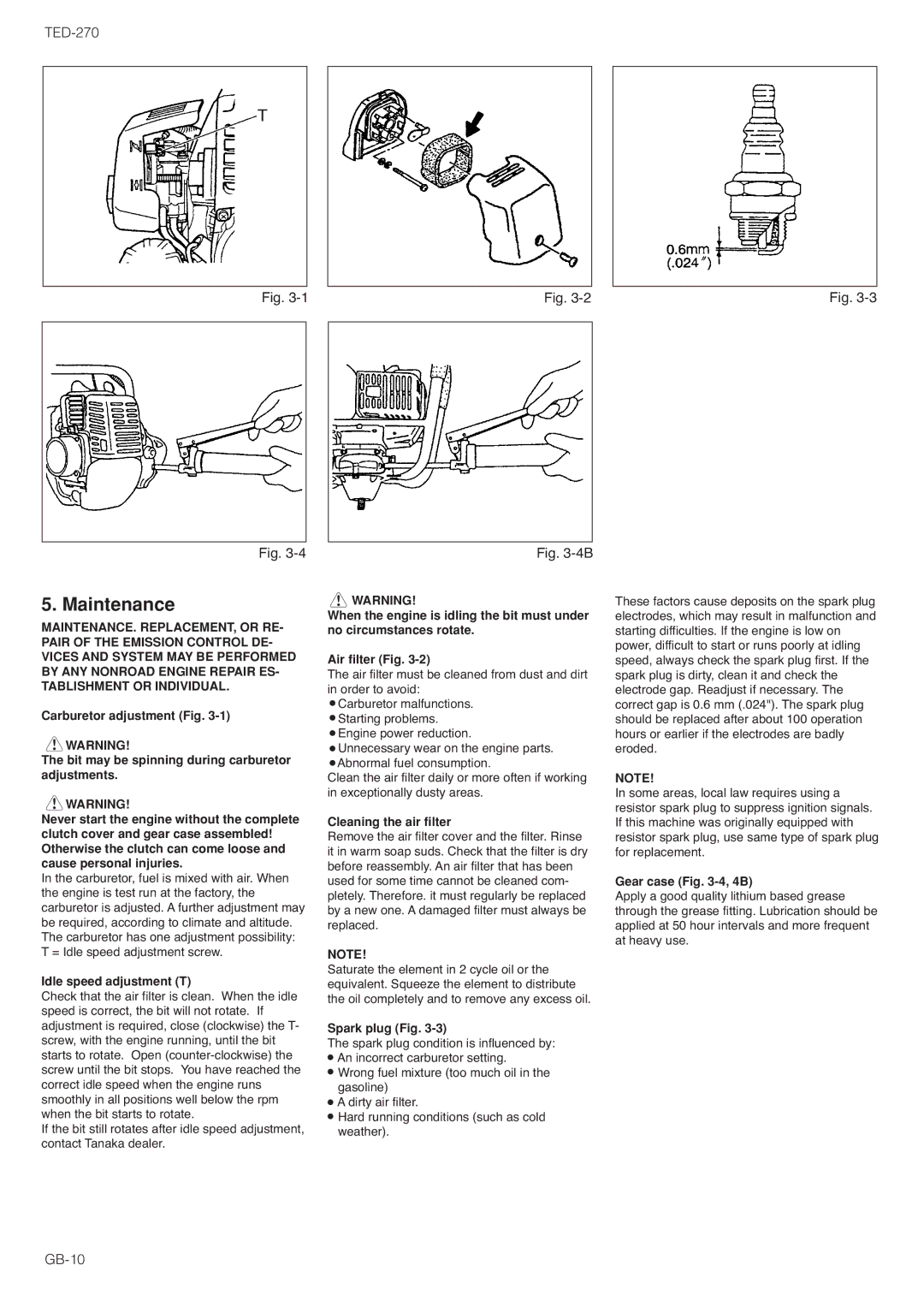TED-270PFL/PFLS, TED-270PFL, TED-270PFLS, TED-270PFR, TED-270PFRS, TED-270PFHS, TED-270PFDH, TED-270PFDLS, TED-270PFR/PFRS, TED-270PFDLS specifications
The Tanaka TED-270 series is a collection of high-performance brushcutters, designed for both professional landscapers and home gardeners. Ranging from the TED-270PFL to the TED-270PFRS, each model inherits robust engineering principles while offering unique features tailored to specific user requirements.At the heart of these models is an efficient 26.9cc two-stroke engine, delivering powerful performance for cutting through thick grass, weeds, and underbrush. The engine is designed with a focus on fuel efficiency, promoting longer operational times and reducing the frequency of refueling. The lightweight construction, typically around 10.6 lbs, enhances portability, making these brushcutters easy to maneuver around gardens and larger landscapes.
The TED-270PFL and TED-270PFLS models are equipped with a straight shaft design that allows for extended reach, making it simpler to clear hard-to-reach areas such as beneath fences or around trees. These models also incorporate a quick-release harness system, providing additional comfort and support during extended use.
In contrast, the TED-270PFR and TED-270PFRS models feature a curved shaft design, which enables better handling and control. This design is particularly favored by users who prioritize ease of use over extended reach. The curved shaft models are adept at maintaining precision when trimming grass along edges and in tighter spaces.
The TED-270PFHS, TED-270PFDH, and TED-270PFDLS versions come with added versatility, pairing the powerful engine with various cutting attachments, including brush blades, string trimmers, and more. This adaptability allows users to switch quickly between different cutting tasks with minimal downtime.
All models in the TED-270 series share key technologies, such as easy-start systems that minimize starting effort, anti-vibration features to reduce operator fatigue, and advanced air filtration systems that prolong engine life by keeping harmful debris out.
Moreover, these brushcutters comply with stringent emissions regulations, ensuring lower environmental impact while maintaining high performance. The robust and ergonomic design ensures that the Tanaka TED-270 series is not just efficient but also user-friendly, catering to both novices and seasoned professionals in the landscaping field.
With their combination of power, versatility, and user-centric features, the Tanaka TED-270 series stands out as a reliable choice for anyone looking to achieve professional-grade results in their landscaping endeavors.

